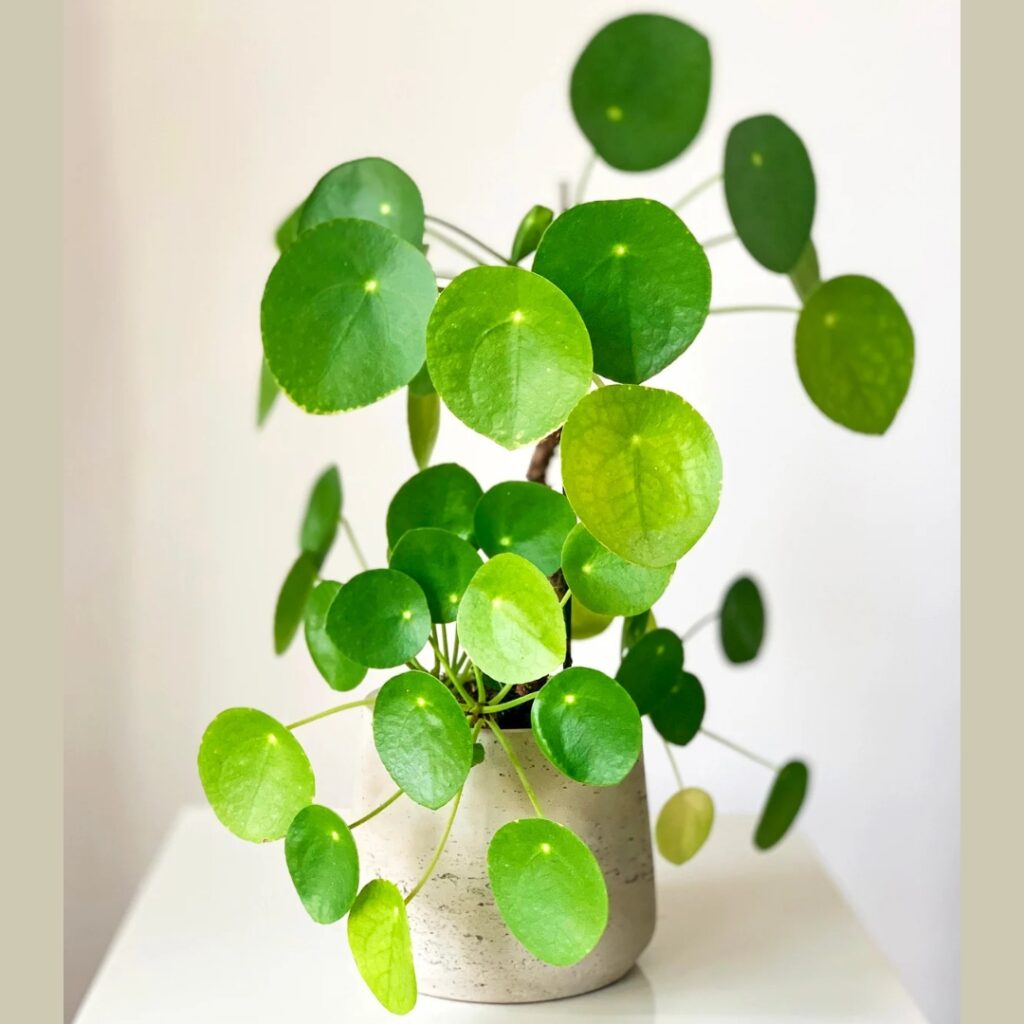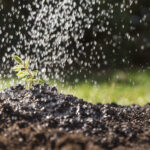The Chinese Money Plant, Pilea peperomioides, is cherished and recognized for its distinct round leaves and low-maintenance care. It hails from the Yunnan province of China. Its round leaves are believed to resemble coins, adding to its reputation as a bringer of good fortune. It has garnered global admiration for its visual charm and simple cultivation. Let’s explore everything you need to know to ensure your Pilea Peperomioides flourishes.
Fun Facts About Chinese Money Plant
Scientific Name: The Chinese Money Plant’s scientific name is Pilea peperomioides and it belongs to the Urticaceae family.
Common Names: It is also known as the “Pancake Plant,” “Missionary Plant,” “UFO Plant,” and “Friendship Plant.”
Cultural Significance: In Chinese culture, it symbolizes good luck, prosperity, and wealth. Its round leaves are believed to resemble coins, adding to its reputation as a bringer of good fortune.
Growth Habit: It is fast-growing, typically reaching a height of 12-18 inches and spreading out to form a bushy appearance.
Flowering: While uncommon for indoor plants, Pilea Peperomioides can produce small, inconspicuous flowers. These flowers are typically green and not very showy, but they appear on a spike or stem that emerges from the base of the plant.
Historical Introduction: It was introduced to the Western world in the 1940s by a Norwegian missionary named Agnar H. Nilsen, who brought it from China to Europe, where it quickly gained popularity.
Air Purification: Like many indoor plants, Pilea Peperomioides improves air quality by filtering out toxins and increasing humidity levels.
Toxicity: This is non-toxic to humans and pets, making it a safe choice for households with children and animals.
Temperature Tolerance: It prefers a temperature range of 18°C to 24°C but can tolerate slightly cooler conditions down to 10°C for short periods.
Companion Plants: It pairs well with other low-maintenance houseplants like snake plants, spider plants, and pothos, which have similar care requirements.
Light Requirements
It thrives in bright, indirect light. Here’s how to get it right:
Ideal Spot: Place it near a window with filtered sunlight. It can tolerate some direct sunlight, but excessive sunlight can scorch the leaves.
Adjustments: If you observe it leaning towards the light, it’s a sign that it needs more exposure. Rotate it occasionally to ensure even growth.
Watering
Proper watering is crucial for maintaining the health of your Pilea. Here’s a simple approach:
Frequency: Water when the top inch of soil feels dry. Overwatering can lead to root rot, so make sure the pot has good drainage.
Method: Water it thoroughly until it drains out of the bottom. Avoid letting the plant sit in water, which can cause the roots to rot.
Soil and Potting
Choosing the right soil and pot is key to keeping your plant healthy:
Soil: A well-draining potting mix is recommended. You can use a combination of regular potting soil with perlite or sand, or a mix of succulents.
Pot: To prevent water from accumulating at the bottom, make sure the pot has drainage holes. If you use a pot with a saucer, it can catch excess water.
Temperature and Humidity
The Pilea Peperomioides prefers moderate conditions:
Temperature: Keep the plant in temperatures ranging from 18°C to 24°C. Avoid exposing it to cold drafts or sudden temperature changes.
Humidity: Average indoor humidity is usually sufficient. If your home is very dry, consider misting the plant occasionally or placing it on a pebble tray filled with water.
Fertilization
Feeding the plant helps it grow strong and healthy:
How often: Give your Pilea fertilizer every month in spring and summer. You can dilute a balanced, water-soluble fertilizer to half-strength.
How to apply: Put the fertilizer on damp soil to avoid root burn. Decrease feeding in fall and winter when the plant’s growth decreases.
Pruning and Maintenance
Regular maintenance will keep it looking at its best:
Pruning: Remove any yellow or damaged leaves to stimulate new growth. You can also trim long, straggly stems to encourage a more lush and compact look.
Cleaning: Use a damp cloth to gently wipe the leaves from time to time to maintain cleanliness and support efficient photosynthesis.
Common Issues and Solutions
Addressing problems early can save your plant from serious damage:
Yellowing Leaves: Leaves turning yellow may indicate excessive watering or inadequate drainage. Make sure to allow the soil to dry out between waterings and inspect the pot for any drainage problems.
Leggy Growth: Sparse and elongated growth typically suggests a lack of sufficient light. Relocate the plant to a sunnier spot and regularly rotate it for uniform growth.
Pests: Be vigilant for common pests such as spider mites and aphids. If you detect them, use insecticidal soap or neem oil to address the issue.
Repotting
Repotting ensures your plant has enough space to grow:
Timing: It’s recommended to repot your Pilea every 2-3 years or when it becomes too big for its current pot. The ideal time for repotting is early spring.
Process: Select a pot that is 1-2 inches bigger in diameter than the current one. Carefully take the plant out of its old pot, untangle the roots, and place it in the new pot with fresh soil.
Conclusion
The Chinese Money Plant (Pilea Peperomioides) is an enchanting and low-maintenance addition to your indoor garden. Its distinctive appearance and minimal care needs make it a wonderful choice for sprucing up your home. By following these practical tips and addressing common issues, you can enjoy a flourishing, stunning plant that adds both visual appeal and good fortune to your living space.


